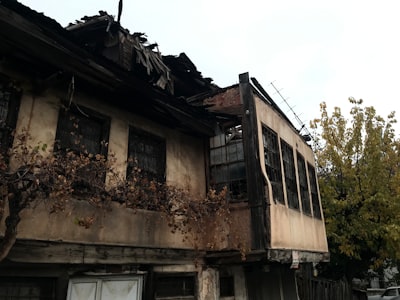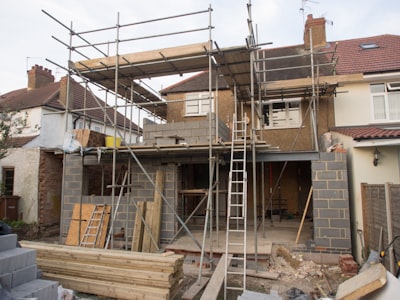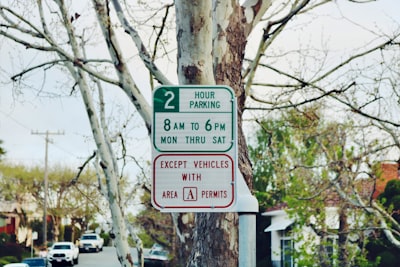Key Highlights
- The Palisades fire caused an immediate drop in home sales, with a 56% decrease in the Pacific Palisades real estate market.
- Despite a fall in sales volume, property values in the high-end Pacific Palisades neighborhood surprisingly increased by 32%.
- Total real estate losses from the Southern California wildfires are estimated to be over $30 billion, impacting thousands of homes.
- Homeowners face significant rebuilding challenges, including high costs, strict building codes, and a growing insurance crisis.
- Buyer demand is shifting, with increased interest in areas adjacent to the fire zones, like Brentwood, and a focus on fire-resistant homes.
Introduction
The recent Palisades fire left a significant mark on Los Angeles County, forever changing the landscape and the lives of its residents. Beyond the immediate destruction, the fire has created lasting ripples throughout the Pacific Palisades real estate market. For homeowners, buyers, and investors, the aftermath presents a complex picture of loss, resilience, and new realities. This article explores the fire's profound effects on property values, land transactions, and the challenges of rebuilding in one of LA's most iconic neighborhoods.
Immediate Impact of the Palisades Fire on Real Estate
In the direct aftermath of the blaze, the housing market in affected areas experienced a sudden pause. Both would-be buyers and sellers in the Pacific Palisades adopted a “wait-and-see” approach, causing transactions to stall as the community grappled with the destruction.
This hesitation was reflected in the numbers. Home sales in the Palisades dropped by a staggering 56% year-over-year in the month following the fire. Many homeowners delayed listing their properties, worried about diminished property values and the overall uncertainty in the Los Angeles market.
Changes in Residential Property Values After the Fire
How has the Palisades fire affected real estate prices in the area? The answer is more complex than you might expect. While the number of home sales plummeted, the market value of properties in Pacific Palisades demonstrated remarkable resilience. In a surprising turn, the typical home price in the 90272 zip code rose 32% year-over-year, reaching approximately $2.9 million.
This price appreciation highlights the unique nature of the high-end Pacific Palisades real estate market. The area's desirability and limited inventory helped sustain, and even boost, home price figures despite the disaster. Buyers still interested in the area were competing for fewer available homes, driving up the market value for properties that remained.
In contrast, other fire-impacted areas like Altadena saw a different outcome, with property values dropping by 8%. This divergence shows that a neighborhood's existing market strength plays a crucial role in its ability to withstand the financial impact of a wildfire, a key consideration for California homeowners.
Commercial Property Losses and Market Shifts
The fire's financial toll extended beyond residential properties, creating a significant market shift for commercial real estate and related industries. With thousands of homes destroyed, the disaster triggered enormous claims that have put immense pressure on insurance companies, some of whom have begun limiting coverage in high-risk zones across Los Angeles County.
This has broad implications for the local economy. The disruption affects not just property owners but also the businesses that serve the community. The path to recovery involves navigating these commercial property losses and adapting to a new economic landscape shaped by the fire.
The key market shifts include:
- Insurance Instability: Major insurers are reassessing their risk, leading to higher premiums or a lack of coverage.
- Increased Demand for Services: A surge in demand for construction, restoration, and architectural services is evident.
- Investment in Resilience: A new niche market is growing for businesses specializing in fire-resistant materials and technologies.
Burned Lots and Land Transactions in Pacific Palisades
Following the destruction, the focus for many has shifted from standing homes to the land itself. The fire left behind numerous burned lots, creating a new and complicated segment within the Pacific Palisades neighborhood real estate market. These land transactions are now a critical part of the area's recovery.
The question for many investors and aspiring homeowners is what to do with these parcels. Selling the land as-is or embarking on the long journey of rebuilding are the two primary paths. The decisions made regarding these land transactions will shape the future look and feel of the community for years to come. What will the future hold for these empty lots?
Rate of Sales for Fire-Affected Lots

Are burned lots in Pacific Palisades selling quickly after the fire? The market for these fire-affected parcels is cautious. While some investors see opportunity, many potential buyers are hesitant due to the significant hurdles involved in rebuilding. The slow pace of home sales in the immediate aftermath suggests that listings for empty lots face similar challenges.
Navigating insurance, securing permits, and facing high construction costs can deter all but the most determined buyers. Redfin Premier Agents report that many house hunters are now looking for properties in flat, less vulnerable areas, which could slow the rate of sales for hillside lots that were burned. The complexity of rebuilding means these listings may remain on the market longer than traditional properties.
The decision-making process for a burned lot is complex, with several factors influencing a potential sale.
- Rebuilding Costs — Estimates range from $300 to $500 per square foot.
- Insurance — Buyers may face difficulty securing affordable coverage for new construction.
- Permitting — Expect challenges navigating updated and stricter building codes.
- Location Risk — Proximity to high-risk wildfire zones remains a major concern.
Shifts in Land Value Post-Fire
What has happened to land value in Pacific Palisades after the fire? The valuation of burned land is a tug-of-war between location and circumstance. On one hand, Pacific Palisades remains one of the most desirable and expensive neighborhoods in the Los Angeles market. The inherent value of a location with ocean views and proximity to Santa Monica is undeniable.
However, the fire introduced powerful downward pressures on market value. The staggering cost of rebuilding, which can be up to $500 per square foot, must be factored into any land purchase. Furthermore, the crisis in the insurance market means that securing a policy for a new home in a fire zone is both difficult and expensive, directly impacting what a buyer is willing to pay for a parcel of land.
Ultimately, the land value for these lots is being redefined. While the prestigious zip code provides a high baseline, the final market value is now heavily discounted by the projected costs and risks associated with rebuilding from scratch in a region acutely aware of its wildfire risk.
Financial Assessment of Real Estate Losses
The financial devastation from the recent Southern California wildfires is immense. Early estimates place the total real estate losses at more than $30 billion, a figure that encompasses everything from condos to multimillion-dollar mansions. This staggering number reflects the sheer scale of property destruction across Los Angeles County.
These losses have sent shockwaves through the housing market, depleting housing supply and straining insurance companies. The rising insurance costs and scarcity of coverage are becoming critical factors in the region's economic recovery, affecting both current homeowners and prospective buyers. We will now look closer at the value of homes lost and the insurance trends that followed.
Average Value of Homes Lost in the Palisades Fire
What is the average value of homes lost in the Palisades fire? While a precise average is difficult to calculate, the context of the local market provides a clear picture. Pacific Palisades is one of LA's wealthiest areas, where the median home price surged to $2.9 million even after the fire. Many of the homes lost were high-end properties, suggesting the value of each destroyed structure was substantial.
Across Los Angeles County, the wildfires destroyed approximately 11,500 homes, according to Cal Fire. Given the high property values in many affected areas like the Palisades and Malibu, the cumulative loss is immense. The number of homes lost represents a significant portion of the region's housing stock, contributing to an already tight market.
For each family, the loss was more than a house; it was a home filled with memories and a significant financial asset. The high median value in Pacific Palisades means that for many, rebuilding presents a formidable financial challenge, even with insurance.
Total Reported Losses and Insurance Trends
How much in total real estate losses have been reported since the Palisades fire? The financial impact is staggering, with some estimates placing the damage between $135 and $150 billion across all recent fires. These figures, reported by sources like The Times & The Sunday Times, highlight the catastrophic scale of the disaster.
This massive volume of real estate losses has pushed the insurance industry in California to a breaking point. Major insurance companies like State Farm and Allstate have started to curtail coverage in fire-prone areas. This has left many homeowners with no option but the California FAIR Plan, a last-resort insurer that offers basic coverage at inflated rates. As the Wall Street Journal notes, this crisis is fundamentally reshaping the homeowners' insurance market.
For property owners, this trend means skyrocketing insurance costs and the daunting possibility of being uninsurable. The instability within the insurance market is now one of the biggest long-term obstacles to recovery and will continue to influence the Los Angeles market for years to come.
Rebuilding Challenges and Community Recovery
For homeowners who lost everything, the path forward is filled with hurdles that go beyond financial assessments. The journey of community recovery in the Palisades is defined by resilience, but it is also marked by significant practical and emotional challenges. Rebuilding a home and a life from ashes is a monumental task.
From navigating complex regulations to dealing with the personal toll of the disaster, California homeowners face a long and arduous process. The following sections explore the specific obstacles they encounter during reconstruction and the changing regulatory landscape they must adapt to.
Obstacles Faced by Homeowners in Reconstruction

What rebuilding challenges are homeowners facing in Palisades after the fire? The obstacles are numerous and complex, turning the dream of reconstruction into a stressful reality for many. One of the biggest hurdles is the sheer cost. With rebuilding expenses running as high as $500 per square foot and material shortages driving prices up, many find their insurance payouts are not enough to cover a new build.
On top of financial strain, homeowners must navigate a maze of insurance claims and new building codes. As one homeowner might say about losing their property, the emotional toll of losing cherished memories is compounded by the frustrating process of proving losses to an insurer. This journey requires immense patience and resilience.
Key obstacles include:
- Financial Shortfalls: Rebuilding costs often exceed insurance settlements.
- Navigating Bureaucracy: Securing permits and dealing with insurance claims is time-consuming.
- Material and Labor Shortages: High demand for skilled labor and fire-resistant materials drives up both costs and timelines.
- The Emotional Toll: Coping with the trauma of loss while managing a complex rebuilding project is draining.
Changing Permitting and Zoning Regulations After the Fire

Rebuilding in the wake of the fire means complying with a host of updated regulations. While Los Angeles County may offer expedited permitting for wildfire recovery, homeowners must adhere to stricter and more expensive building codes designed to mitigate future wildfire risk. These Wildland-Urban Interface (WUI) codes are no longer optional.
These regulations mandate the use of fire-resistant materials such as metal roofs, stucco siding, and tempered glass. For properties within the coastal zone, homeowners in Pacific Palisades also face additional scrutiny from the California Coastal Commission to ensure compliance with environmental preservation laws. This adds another layer of complexity to the permitting process.
These new zoning regulations and building requirements, while essential for safety, add significant costs and time to reconstruction projects. For California homeowners, working with architects and builders experienced in these new codes is crucial to successfully navigating the post-fire regulatory environment, a sentiment echoed by organizations like the California Association of Realtors.
Conclusion
The aftermath of the Palisades fire has left an indelible mark on the local real estate landscape. As we’ve explored, the immediate and ongoing impacts on both residential and commercial properties highlight the community's resilience amidst significant challenges. Homeowners are navigating financial losses while also facing the complexities of rebuilding in a transformed environment. Understanding these dynamics is crucial for potential buyers, sellers, and investors alike. As the community seeks to recover, staying informed about market shifts and opportunities is essential. If you're considering investing in the area or simply want to learn more about the current real estate trends, reach out for a free consultation with our experts to guide you through this evolving landscape.

.png)



